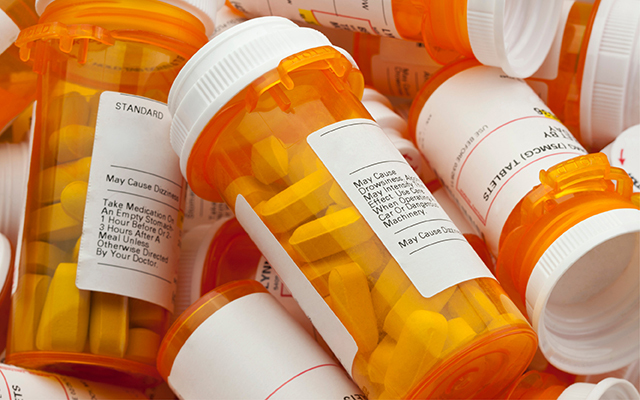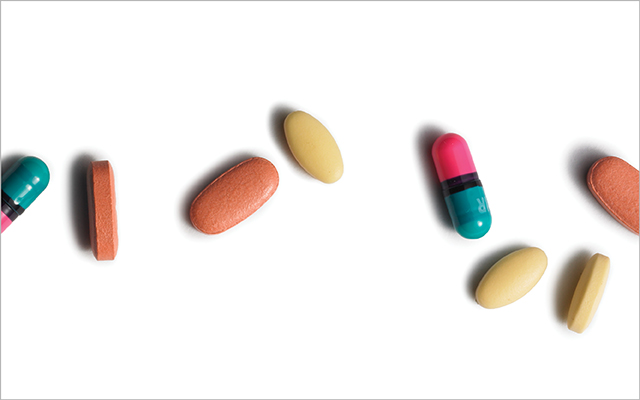During the height of the 1970s’ recreational-drug craze, I was mostly an innocent bystander. I did my share of experimenting, but I knew my limits. When a friend invited me to join her on an acid trip one lazy autumn afternoon, it didn’t take me long to calculate the myriad ways in which that journey could end badly.
It’s been nearly 30 years now since I last imbibed, and it seems I’m still an outlier on the drug scene. In this case, however, it’s legal pharmaceuticals. About one in four Americans between 65 and 69 — and nearly half of those between 70 and 79 — takes at least five prescription drugs daily. And it’s not uncommon, Sandra Boodman reports in Kaiser Health News, to find members of the Medicare set popping 20 different pills on a daily basis. It is, she writes, “America’s other prescription drug epidemic.”
While opioid abuse gets all the headlines, statins, antidepressants, and other popular pharmaceuticals are sending geezers to emergency rooms in droves due to medication problems that can include dizziness, confusion, and falls, Boodman notes. But many of these side effects simply result in another visit to the pharmacy.
“The glide path to overuse can be gradual,” she explains. “A patient taking a drug to lower blood pressure develops swollen ankles, so a doctor prescribes a diuretic. The diuretic causes a potassium deficiency, resulting in a medicine to treat low potassium. But that triggers nausea, which is treated with another drug, which causes confusion, which in turn is treated with more medication.”
This “prescribing cascade” is fueled by various factors, not the least of which is Big Pharma’s relentless marketing efforts to potential patients. Since the FDA loosened restrictions on direct-to-consumer drug advertising in 1997, folks have been flocking to their doctors demanding the latest miracle remedy. A 2015 study reported that the percentage of Americans of all ages taking five or more prescription drugs daily nearly doubled between 2000 and 2012.
But that’s not even where the industry spends most of its marketing dollars. Pharmaceutical companies invest more in so-called detailing visits to doctors, which often include meals and gifts, than drug ads or even research and development. When state regulators limited those visits, according to a recent Carnegie Mellon University study, it tended to suppress the number of prescriptions doctors wrote.
Finally, professional protocols that discourage doctors from overruling their colleagues on prescription decisions often result in more pills for the already overprescribed patient. And, despite evidence that most older folks understand the risks, they seldom question doctor’s orders. A recent University of Michigan study revealed that fewer than half of those taking six or more prescriptions had discussed possible drug interactions.
At the heart of the matter, however, is Western medicine’s inherent drug addiction. A Canadian research institute released a study in May showing that half of all seniors complaining of cold symptoms left their doctor’s office with a prescription for antibiotics. Antidepressants remain a popular remedy despite volumes of research (including recent studies from the University of Eastern Finland and the University of Texas) demonstrating their risks — and general ineffectiveness.
As the old saying goes, if your only tool is a hammer, every problem looks like a nail. “That’s what we were taught as physicians: to prescribe drugs,” Ranit Mishori, a professor of family medicine at Georgetown University, tells Boodman. “We are definitely not taught how to take people off meds.”
Mishori and others would like to see that change, and a modest effort toward “deprescribing” seems to be emerging in the United States after similar initiatives have shown some promise in Canada and Australia. The Choosing Wisely campaign, which lists unnecessary procedures, has been getting some traction in recent years, for instance, building on the work of the Beers Criteria, which lists overused and unsafe drugs.
Let’s just say I’m cautiously pessimistic about weaning Western medicine from its pharmaceutical jones. And that means most seniors are likely to continue to lean on drugs like my contemporaries did back in the day. It’s just not for this geezer, who has developed what I suppose some might see as an obsessively skeptical perspective on the whole healthcare industry.
Yeah, I know what you’re thinking. There’s probably a pill for that.




This Post Has 0 Comments